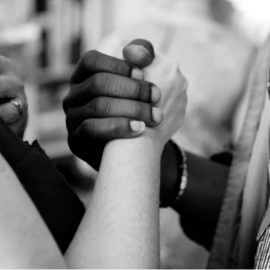

This article is an excerpt from the Shortform book guide to "The Personal MBA" by Josh Kaufman. Shortform has the world's best summaries and analyses of books you should be reading.
Like this article? Sign up for a free trial here .
How do people make buying decisions? What are the key drivers that underpin a consumer’s decision to part with their hard-earned money to acquire a certain product?
The consumer decision-making process may seem complex, but ultimately it is underpinned by five basic needs. These include 1) to feel good about themselves, 2) to connect with others, 3) to grow and learn, 4) to feel safe, and 5) to avoid effort.
Keep reading to learn about the psychology of consumer buying decisions.
People Want to Fulfill Their Basic Needs
While people appear to want many different things, Kaufman argues that they all make purchases in an attempt to fulfill five basic needs:
- To feel good about themselves: This includes enhancing their well-being, appearance, and status and satisfying sensory desires.
- To connect with others: This includes engaging in romantic, platonic, and professional interactions, both online and offline.
- To grow and learn: This includes increasing academic or professional knowledge and pursuing interests and hobbies.
- To feel safe: This includes protecting themselves, their loved ones, and their possessions from potential threats.
- To avoid effort: This includes eliminating tasks that take up too much time and energy or those that require specialized knowledge or resources.
| Various Factors Influence Receptivity and Perception of Value Beyond the five basic needs, consumer buying decisions are influenced by their perception of value. Marketing experts identify four factors that influence how people judge the value of products and services: Individual factors: This includes a person’s occupation, age, economic status, lifestyle, personality, and preferences. For example, the recent divorcee wants to find love but isn’t receptive to dating services because she’s worried about how much it will cost, believes that she’s too old, or would prefer to meet someone without using an intermediary. Psychological factors: This includes their drive to meet a certain emotional need, such as comfort, how susceptible they are to external influence, how skilled and knowledgeable they are, their attitudes and beliefs, and their prior experience with similar products and services. For example, the recent divorcee might devalue and automatically ignore dating services because she doesn’t know anyone who’s successfully found love through them. Social factors: This includes what their culture, social class, religion, family, or the type of people they want to associate with think about the products and services in question. For example, the recent divorcee might want to sign up for a dating service but fears how her family will judge her. Cognitive factors: This includes how willing they are to expose themselves to new and relevant information so that they can think objectively. For example, the recent divorcee might assume that she’s right about how useless dating services are and choose not to proceed. Or, she might engage in research so that she can make a more informed decision. |
Businesses Align Offers With What People Want
Now that you know the basic needs that motivate people to make buying decisions, let’s look at the many different ways businesses can provide services to meet these requirements. Kaufman suggests eight ways for businesses to fulfill one or more of these five basic needs.
- Create or buy products to sell: This involves creating or buying something tangible and keeping enough inventory to fulfill customer demand. For example, design and manufacture toys or purchase premade toys in bulk to distribute and sell.
- Offer services for a one-time fee: This involves providing specialized skills and abilities and often requires additional employees to fulfill customer demand. For example, charge a fee to edit a manuscript or repair an engine.
- Create an asset and charge for access: This involves creating a single shared resource that multiple people can benefit from at the same time. For example, build a cinema and charge multiple people to view one screen.
- Supply products and services for subscription fees: This involves building a customer base and providing ongoing benefits for a recurring fee. For example, offer regular pool maintenance for a pre-arranged monthly payment.
- Rent out physical property: This involves acquiring and maintaining an asset and charging people to use it for a set period of time. For example, lease your garage as storage space and charge for the length of the tenancy.
- Provide a brokerage service for commission: This involves acting as an intermediary between sellers and buyers and negotiating fees based on the value of the sale. For example, match employers with job seekers and charge a percentage-based fee of the hiring salary.
- Create and monetize attention: This involves creating value to attract the attention of an audience and then selling access to that audience to a third party. For example, attract attention to your blog by offering valuable information and then sell ad space for additional revenue.
- Lend money or offer insurance: This involves capitalizing on financial assets by offering funds or risk-protection in exchange for a fee. For example, offer financial loans and charge interest or offer credit or warranty options for your products and services.

———End of Preview———
Like what you just read? Read the rest of the world's best book summary and analysis of Josh Kaufman's "The Personal MBA" at Shortform .
Here's what you'll find in our full The Personal MBA summary :
- A comprehensive overview of how businesses work
- The five key processes that underpin every business
- How to identify profitable opportunities to ensure business success






